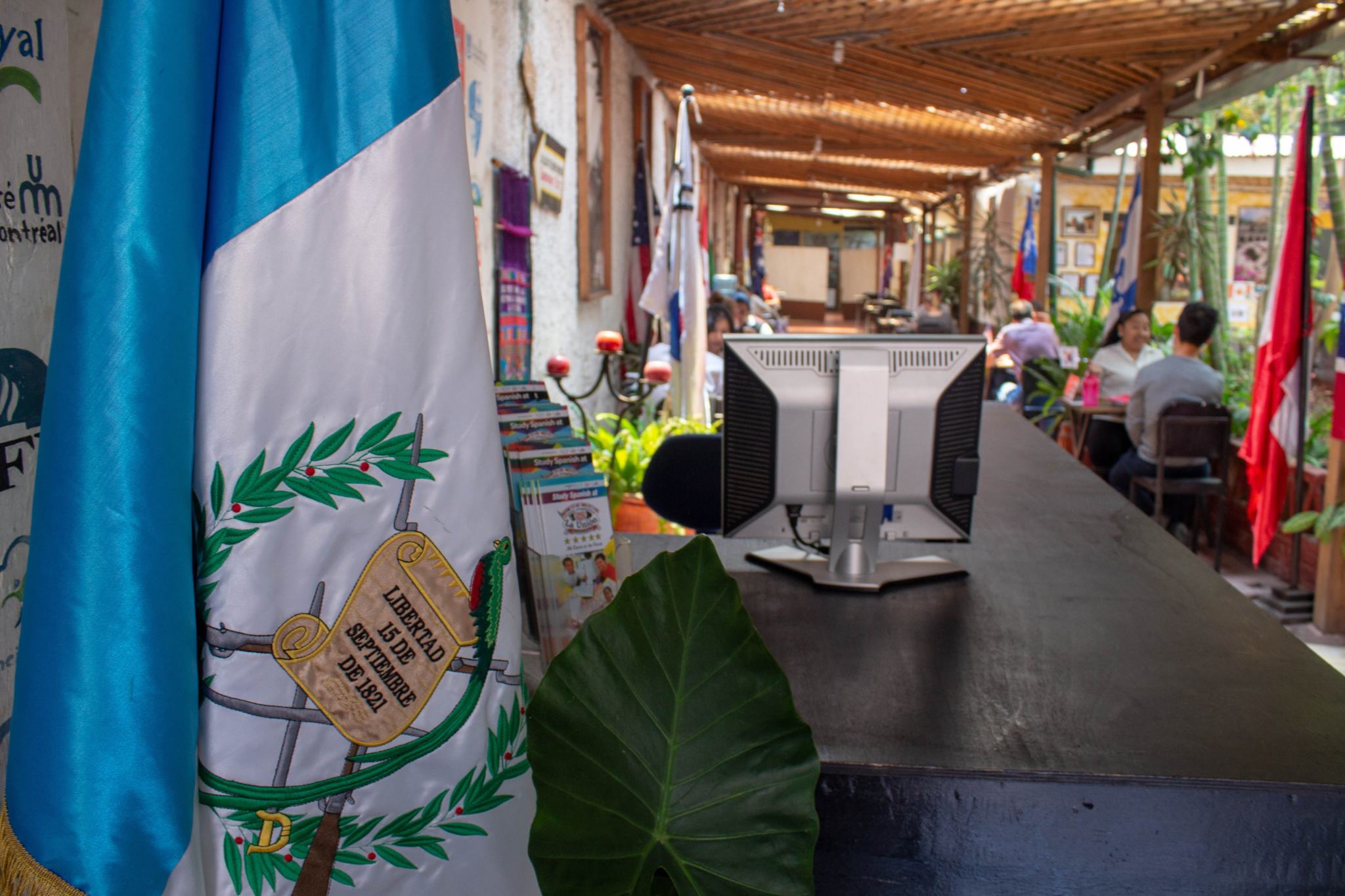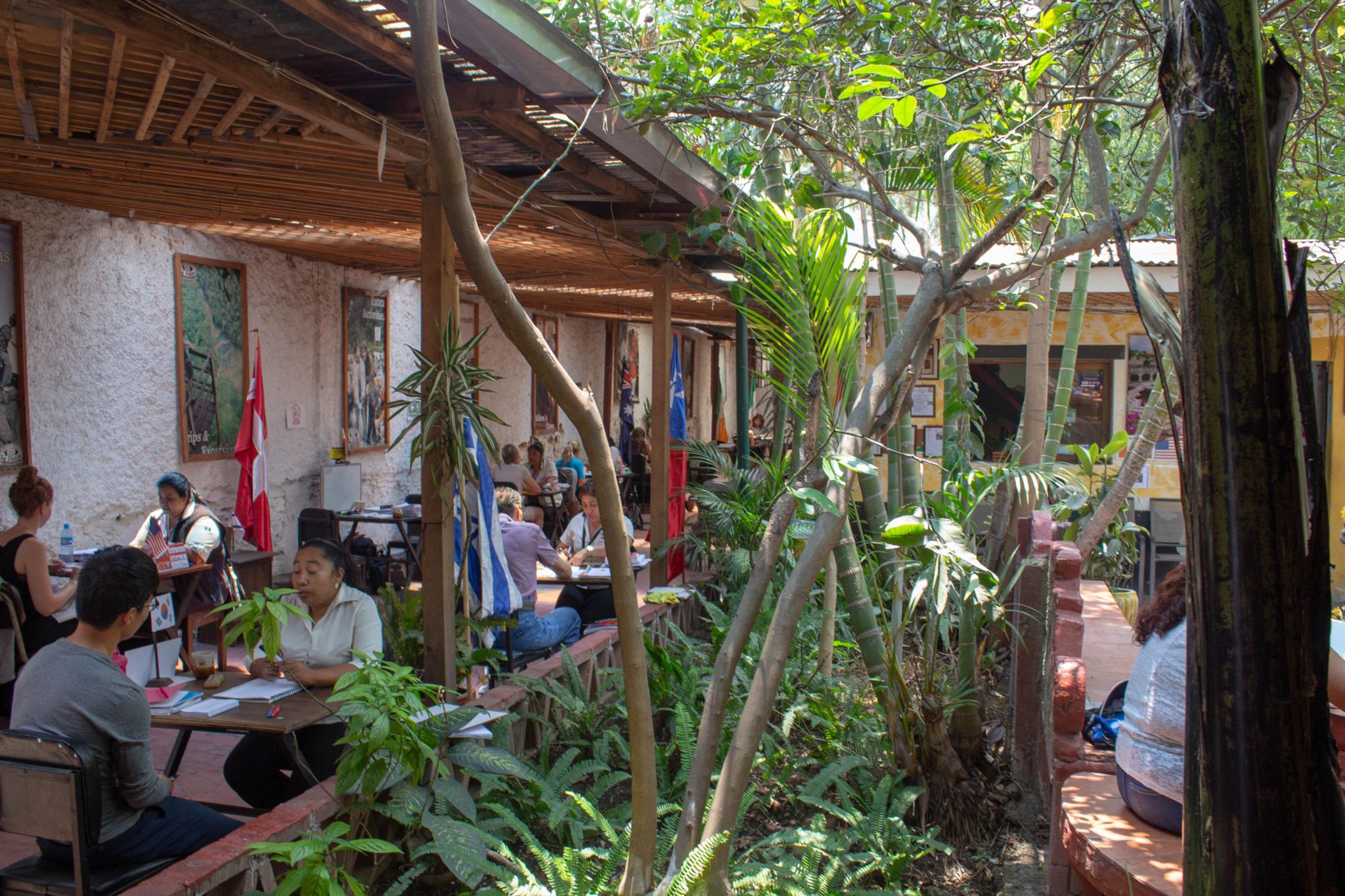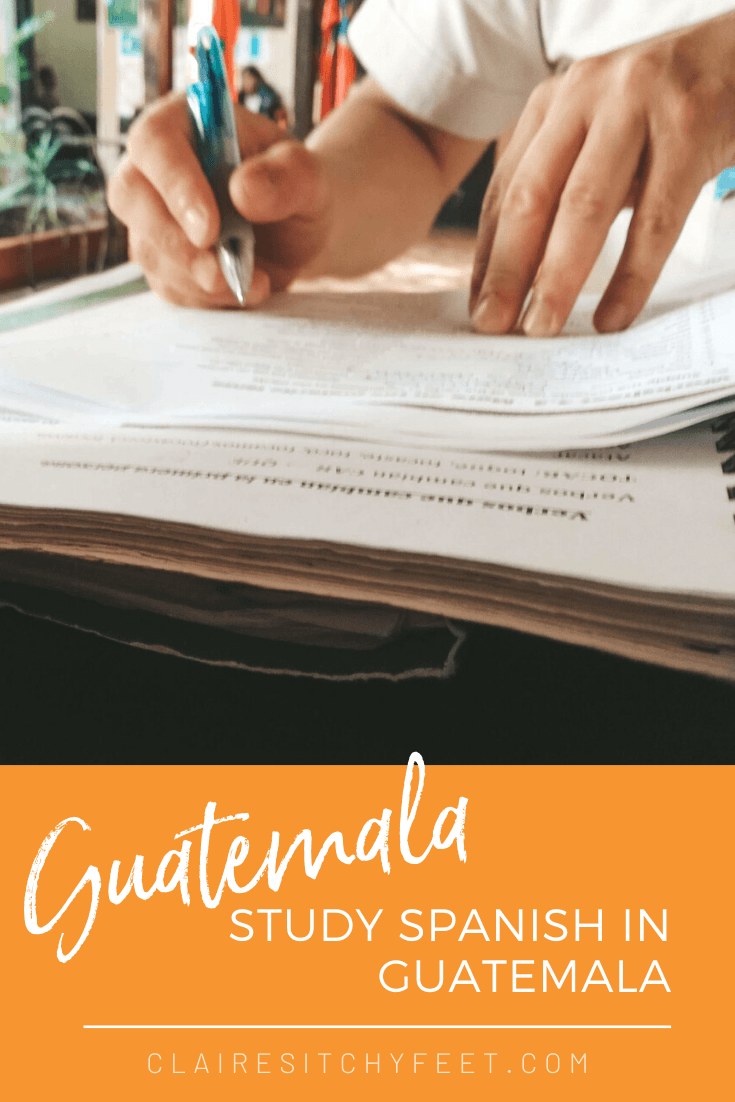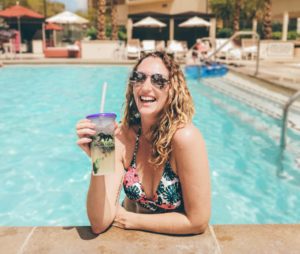Are you wondering, “Where can I learn Spanish in Central America?” Guatemala is home to some of the best Spanish immersion programs for adults. One of the best things I did while visiting Latin America was to learn Spanish. It has opened many doors for me, not to mention how much stress and money I’ve saved by being able to communicate in Spanish.
What language do they speak in Guatemala? Spanish is the most common, but some Mayan and indigenous languages are also spoken throughout the country. If you are searching for the best place to learn Spanish, Guatemala should be at the top of your list.
This guide to Guatemalan Spanish learning experiences shares everything you need to know about where to learn Spanish in Guatemala, whether you should choose a homestay, and helpful budgeting guidance.
Quick Tip: Book accommodation, tours, and transport ahead of time online to save money and stress.
Best Guatemala Tours: Click here to check out the top Guatemala tours
Best Guatemala Accommodation: Click here to check out the best accommodation in Guatemala
Best Guatemala Transport: Click here to book a bus, ferry, or train in Guatemala
Things to Consider Before Embarking On a Guatemalan Spanish Learning Experience

Deciding to learn a language abroad is exciting, but there are some key things you should consider. It’s not just about packing your bags and enrolling in a language school. There are many questions you must ask yourself and decisions you must make to ensure your language-learning journey is rewarding and stress-free.
As someone who’s traveled to foreign countries and tried to learn the language, I can tell you that some preparation goes a long way! Let’s discuss what to consider before you commit to learning a language abroad.
1. What do you want/need to gain from the experience?
Before doing anything, you must identify what you want to gain from learning another language. Here are some questions to consider:
- What’s your end goal?
- Are you serious about becoming fluent, or do you want to learn enough to get by in a particular country?
- Do you want to learn to speak the basics, or do you want to learn how to read and write well?
- Is it for business or pleasure? Is your desire to learn just for you, or do you need it for your studies/work?
- Do you want to take exams?
You must be clear about all of these before contacting a language school. I learned the hard way how important it is to know before you start. When I embarked on an intensive Guatemalan Spanish course in San Pedro, I wasn’t clear about my desire to learn enough for my travels through Latin America.
I ended up spending two weeks learning more about structure and verbs than I did anything else. I finished a week early with a head full of grammar and unable to speak much Spanish. I wish I’d been direct from the start that my focus was on speaking and practical knowledge.
2. What kind of learner are you?
As a dyslexic person, this is important—everyone must think about it before beginning a language course. I’m a visual learner and also learn much better by doing. During my two-week course, there were little to no visual aids, and the majority of my teaching was very didactic and one-way. There was a lot of TTT (Teacher Talking Time) and little LTT (Learner Talking Time). I know I learn much better by practicing through games and role-play scenarios.
If you do a 121 course, which many intensives abroad are, it can sometimes become a bit didactic, with the teacher doing most of the talking. I would have benefited from a combination of 121 and group work. Communicate your preferred learning style to the school and your teacher before you start. If you like learning in a group, ensure this is available at your school.
3. Where is the best place to study?
This all depends on a few things, including time and money. I wanted to learn Spanish to travel through Latin America, so I wanted to attend a school in Latin America. Regarding the best place to learn Spanish, two countries came out on top: Guatemala and Colombia.
Both countries have a neutral accent and offer excellent value for your money. I chose Guatemala initially as it was cheaper, and they speak slower. I later took classes in Colombia, which was a great experience.
I highly recommend learning a language in its country of origin, i.e., French in France or Italian in Italy. You will learn from native speakers and gain insight into the culture and place you are studying. This is perfect if the course is your first introduction to that country.
4. What is your budget?
There is a considerable difference in cost between learning Spanish in Latin America versus Spain. When thinking about your budget, consider how many hours you want to study and if you want a homestay experience. I suggest doing a homestay because you will be fully immersed in the local culture, and they’re usually budget-friendly.
5. How much time do you have, and how many hours do you want to study?
I foolishly decided to study for five hours a day, five days a week, for three weeks. I quit after two weeks and spent my last week studying alone and practicing as much as possible. Five hours a day for three weeks is pretty intensive and not for the faint-hearted!
In hindsight, I should have done three hours a day for three weeks, but two would also have been a good start. This is the ideal amount of time to learn the language basics if, like me, you want to know enough to get by. After my first three weeks, I took weekly 1-2 hour conversation lessons until I felt like I had a good grasp. You will also pick the language up as you’re exposed to it while traveling.
If your goal is to study until you are relatively fluent, I recommend a maximum of four hours a day over 4-6 weeks. Also, I suggest changing schools every 2-3 weeks to experience different teaching styles.
6. Does the teacher’s gender matter to you?
This may not factor into your decisions at all. It wasn’t something I considered before my course, but I realized after my first week that I would have preferred a female teacher. I have no reasoning behind this, but I felt more comfortable with a female teacher. If you’re concerned about the teacher’s gender, ask for a female or male before beginning school.
7. To fully immerse or not?
I knew the only way for me to learn was complete immersion! When learning a language, it’s easy to default to speaking your native tongue. You can usually understand what people are saying and even read and write a little before you can speak the language you’re learning. The best way to practice speaking a new language is to force yourself or be forced.
Total immersion means living with a native family. They will likely not speak your language—even if they do, they will be instructed NOT to talk to you in it. After your lessons, you must use what you have learned to communicate with your “family.”
There are many reasons to do a homestay, and it was my favorite part of learning Spanish in Guatemala. I stayed with a lovely family in San Pedro. I got to know them well—we laughed at my terrible Spanish, and I enjoyed three meals a day, six days a week with them. During a homestay, you’ll practice your chosen language and gain genuine insight into the country you’re studying in.
Another thing to consider is the place you are studying. In Guatemala, there are three main places to learn Spanish. I chose San Pedro over the others as most of the locals don’t speak English, and there are fewer English-speaking tourists. Places like Antigua are more challenging to learn Spanish, and English is more prevalent.
The best place to learn Spanish in Colombia is Medellín. Read about finding the best Spanish school in South America here.
What to Think About Before Learning a Language Abroad:
- What’s the end goal?
- How do you learn best?
- Where is the best place to learn your language?
- What’s your budget?
- How much time do you have?
- How intensive do you want your course to be?
- Do you want to visit more than one place/school?
- Does the teacher’s gender matter?
- Do you want a fully immersive homestay experience?
Did You Get Travel Insurance Yet?
The Insurance companies I recommend are Hey Mondo and Safety Wing
Hey Mondo is great if you are looking for a great value flexible policy. They offer single-trip cover, annual multi-trip cover, and long-term travel cover. Safety Wing is great value, with monthly coverage starting at $45.08. It’s super easy to use, and it just renews each month. I currently use them as they offer me free cover for my son as part of my policy.
Read my full travel insurance post here, where I go into detail about all companies.
Where to Learn Spanish in Central America: Guatemala
What language does Guatemala speak? Spanish is the most common, so it’s a popular place to learn the language. After deciding to study Spanish abroad, I researched the best place to learn Spanish. I knew that I wanted to study intensively for several weeks to get a grasp of the language and fully immerse myself. I initially considered studying Spanish in Spain, but I decided against it for several reasons:
- It was out of my budget
- I would be studying in a class of multiple people
- It’s harder to get fully immersed as many people speak English in Spain
- Since I wanted to travel in Latin America, it would be a tough adjustment as the accent is very different
Why I Chose a Guatemalan Spanish School
When I began researching where to learn Spanish in Latin America, two places continuously topped the list: Guatemala and Colombia.
These countries are the cheapest places to learn Spanish and have relatively neutral accents. I decided to learn Spanish in Guatemala as it ticked a few more of my boxes. Guatemala was also a better starting point for my travels in Central America. From there, I could work my way down through South America, taking more Spanish classes in Colombia.
Quick Tip: View my full Guatemala packing guide here including a downloadable checklist. And check out my Guatemala Essentials shopping list here.
Where Can I Learn Spanish in Guatemala? Best Programs to Learn Spanish
There are many Guatemalan Spanish schools, and the country’s most popular areas to learn the language are Lake Atitlan (San Pedro) and Antigua.
Antigua is larger, with far more schools and students. As a result, the environment isn’t as immersive. While many Antigua schools have homestay options, they are more like hostels. The good thing is you will have several students in your accommodation who speak English, but you may struggle to find opportunities to practice your Spanish.
One of Antigua’s best Spanish immersion programs for adults is La Union Spanish School. This fantastic, fully immersive program involves staying outside of Antigua with a local family and riding the bus to school each day. This is ideal for serious, dedicated students.
Learning Spanish in Lake Atitlan is a much different experience. The area is quieter, and the local accent is unique, as Spanish is a second language for many locals. You will find far fewer people speaking English in Lake Atitlan.
I’ve studied Spanish on four separate occasions in Guatemala: once in Lake Atitlan and three times in Antigua. While I enjoyed my time in Lake Atitlan, learning Spanish in Antigua suited me better.
For my first time in Guatemala, I studied for three weeks in San Pedro at the Cooperativa Spanish School. I studied for five hours a day and stayed with a local Mayan family. This school has excellent reviews and gives back to the local community, which isn’t something all schools do.

Guatemalan Spanish Teaching Styles
All teaching in Guatemala is done 121 unless you are traveling with someone; then, you can request to have lessons together, but this is discouraged. Because it’s 121, it’s very responsive to your needs. That said, it’s also really intense, and at times, it can be unbelievably frustrating. There is nowhere to hide!
Due to my dyslexia, there were times when I wanted to cry, especially at the beginning. I didn’t like my teacher at Cooperativa; he seemed more interested in teaching me as many verbs as possible rather than ensuring I was learning anything.
My experience in Antigua was very different. The teachers were much more patient and professional. They checked in with me and went at a pace that suited me.
A big part of the way you are taught in Guatemala is that they get you talking as much as possible. You chat about your day and life in general, trying to use fewer and fewer words in your native tongue and more in Spanish. This way of learning suited me; the more formal education of the verbs and sentence structure got me.
Heart of Travel is now offering an excellent online Travel Spanish basics course, which I have been taking. It is the perfect way to help prepare you to travel to Latin America. I wish I’d taken it before traveling to Guatemala to study at a Spanish school, as it would have given me a jump start. They also offer Spanish immersion courses in many different countries. Click here to learn more about Heart of Travel and its Spanish language programs.

La Union Spanish School in Antigua
If you’re wondering, “Where can I learn Spanish in Guatemala?” I highly suggest Antigua over San Pedro. La Union is the best place to learn Spanish and offers excellent homestay options. The school is in a great location, classes are in the garden, and coffee is on tap!
They also have plenty of activities, from dancing to cooking classes. My teacher was incredibly professional and patient. I also took private 121 classes in Antigua, another great option if you want a few classes a week but don’t want to study in a school.

Cooperative Spanish School in San Pedro
The school itself was beautiful. Lessons take place in the garden in little teaching cubbies. Each cubby has a table, two chairs, and a whiteboard. Again, there is water, tea, and coffee on tap (you will need it), and you can choose how many hours you study a day, from one to six. I chose five, which I regretted straight away. I suggest three to four hours daily, depending on how long you can concentrate.
Guatemalan Spanish Homestay Experience
I loved being in a homestay while learning Spanish, though it can be a culture shock if you expect a luxurious experience. My room was simple, the shower was almost always cold, and meal times were fixed. I loved meals with the family and having the chance to talk with them and practice my listening and speaking skills. The first week was tough, as I knew very little Spanish. I found myself nodding like an idiot, saying “si” repetitively.
I didn’t do a homestay in Antigua as I was living there then, so I didn’t need to. However, the experience is similar if you stay outside the city. In the town, you will likely be in a hostel or a house with many other students.

My First Experience Learning Spanish in Guatemala
The first time I took Spanish classes in Guatemala, I knew no Spanish at all! I chose to do three weeks, but I had to stop after two. This was 100% the right thing for me to do. I have written about my reasons for stopping here if you are interested; I won’t go into it again in this post!
But by the end of my three-week stay (I stayed in the homestay full time; I just stopped having classes), I had so many verbs that I felt like my head would explode. I had even learned three past tense verbs, although it took me a while before I used them!
By the end of the first week, I noticed I was beginning to understand much more. When I sat at dinner with the family, I could follow the conversation. If someone asked me a direct question, though, I still went into panic mode, and all of the words I knew left me!
Conversations, however, were still beyond my grasp.
By the end of three weeks, I could read basic Spanish, i.e., menus and signs. I could follow along with most conversations and answer simple questions (or at least understand the question even if I didn’t quite know how to respond). I also felt comfortable going into food and drink places and ordering in Spanish. My pronunciation wasn’t great, but I got by without significant issues.

Looking for Accommodations in Antigua?
I recommend several places for a hostel, including Selina and Yellow House Hostel. I recommend Hotel Mesón de María and Barbara’s Boutique Hostel for hotels. I’ve gathered all the best places to eat in Antigua if you need recommendations.
If you want to stay in San Pedro, I recommend Zoola San Pedro Atitlan, AmiGos, Hotel Tinamit, Cristalinas Cafe, or Hotel & Restaurant at Lake.
In Panajachel, I recommend PanaHouse or Selina Atitlan.
I also wrote an entire accommodation guide for Antigua, Guatemala City, and Lake Atitlan.
Guatemala Travel Guide Planning
🧳 Any recommendations on what I should pack for Guatemala?
Yes! I have created a whole packing guide to Guatemala which you can read here and you can also check out my packing list for Guatemala on Amazon here.
🚗 Where can I book bus or private transportation while I’m in Guatemala?
I strongly recommend using GottoGo. You can book almost all transport in the major tourist destinations through them online. They don’t just cover buses they also cover shuttles, ferries, and private drivers.
🎫 Where can I buy tickets for museums, attractions, and tours in Guatemala?
I recommend either Viator or GetYour Guide. They have a lot of options!
👩⚕️ What is the best insurance to have while traveling?
I recommend using Heymondo for a great value policy. The app also offers you 24/7 Dr Chat. For Digital Nomads check out SafetyWing digital nomad insurance.
I have also written a blog post covering all my recommended travel insurance here
✈️ Any flight recommendations?
WayAWay offers you cheap flights with cashback. You can use this code CLAIRE22 to get 10% off. Otherwise Skyscanner or Expedia are my go-to flight searching platforms.
📱What do you use for internet connection while traveling?
I’m a big fan of personal WiFi devices and they have saved my ass so many times when traveling. I wrote a full review of the top travel WiFi devices you can read here. I personally use GlocalMe as I can either pop in a physical sim card or use their local carrier.
With regards to my phone connection, I use e-sims while traveling, so rather than having to swap out my regular sim card I can download the app and buy a virtual sim card. I recommend using eitherAirhub or Alosim. Both have great coverage of multiple countries and are very easy to use.
🛏️ What is the best platform to use for booking accommodation?
The 3 best platforms that I normally use are Booking.com, Hotels.com, and Expedia They offer great deals and multiple options. I always check all three to be sure of the best deals.
🛅 Do you have any luggage recommendations for traveling?
I do have a complete list of the best packing and luggage products that I recommend, you can check the list here. I’m currently traveling with this suitcase and this backpack.
Where to Learn Spanish in Guatemala: Final Thoughts
If you are considering learning Spanish and want to do an intensive course, I highly recommend Guatemala. Guatemala is the best place to learn Spanish in Central America because it’s affordable, and the local accent is pretty neutral.
This guide to Spanish courses has more information about the best programs to learn Spanish in South America.
You can book your Spanish school classes through GuateGo and choose from lessons in Antigua, San Pedro, Panajachel, San Marcos, or Xela. Their website is excellent for booking transport and experiences in Guatemala. They are a Guatemala-owned company that has painstakingly brought together all the transport and tour options in one easy-to-use website. You can book transport in Guatemala with them here and Guatemalan tours with them here.




Karen Haire
Friday 3rd of November 2023
I loved your post - lots of very useful information here! Especially useful to me was determining my goals before choosing a class. Thanks! ps - there's a typo in "It really is the perfect way to help repair you to travel in Latin America." I think you meant prepare rather than repair.